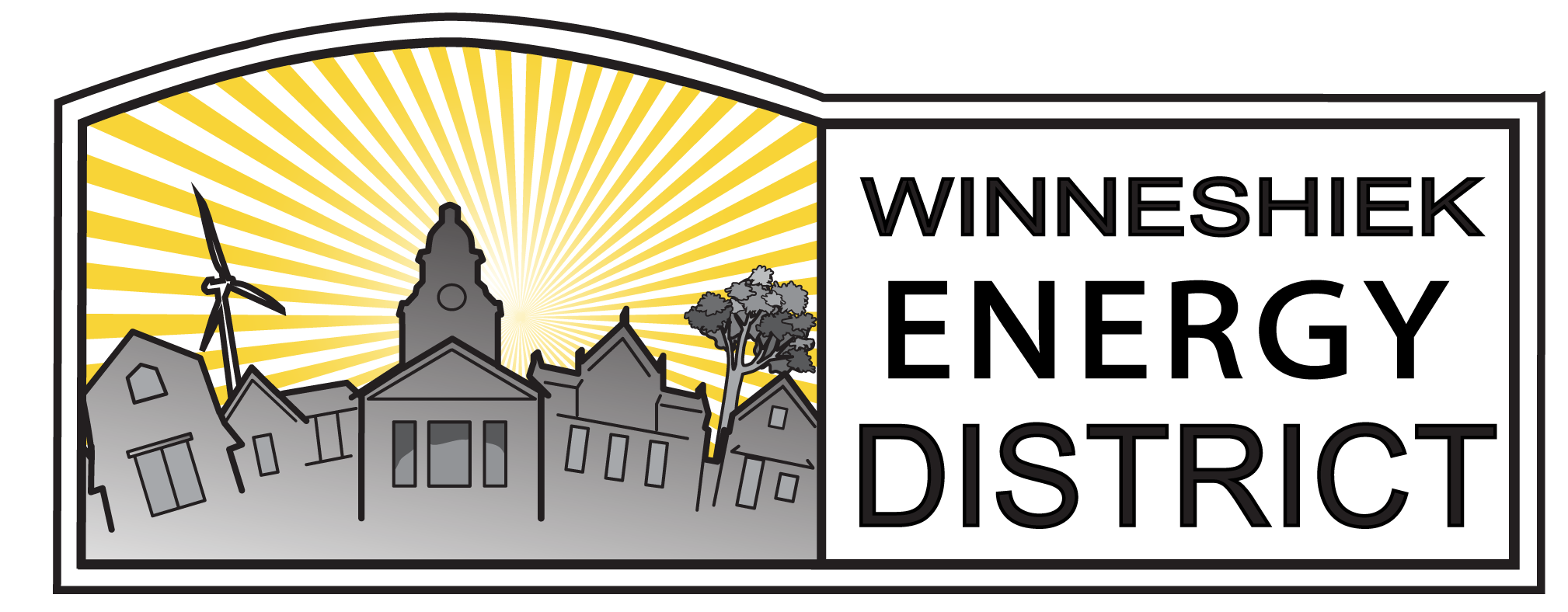A Solar Story
Dale Goodman, Decorah Resident
In the summer of 2014, I was outside building a retaining wall while Decorah Electric was installing a solar array across the street on the roof of First Lutheran Church. I paused and watched frequently. My wife, Susan, and I had been advocates for clean energy for a long time, but we had never been in a position to invest in it ourselves. Now we could.
My father – a dedicated social/environmental activist – had died the previous year (at age 98!) and left us a small inheritance. Susan and I decided that it would be a pleasing tribute to my father to use his money for a solar array on our home. Inspired by First Lutheran Church in Decorah, we started to investigate the possibilities.
The “rules” from our electric provider were that we couldn’t install a solar array that produced more than 80% of our normal usage. A 24-panel solar array with a 6.6KW capacity satisfied that requirement and the south-facing slope of our roof had just enough space to accommodate it. The cost was $21,500. It was installed in late December 2015 and, after the appropriate inspections, went “online” in the middle of January 2016.
We were thrilled – and we imagined my dad was thrilled too. We became meter watchers – noting how production changed with sunshine versus cloudy days – or with a layer of snow on the panels – or with the afternoon shade from the big Norway Maple after it leafed out in the spring – or with changes in day length. It was intriguing.
But, more importantly, we noted how our activities affected our usage – how, for instance, our usage spiked on the days we did laundry and used the dryer. Years before, we had become aware of our “carbon footprint” through a program called “Cool Congregations” – now a part of Interfaith Power and Light. “Aware” is not really the right word; we were shocked, actually. However, out of our new level of awareness, we began making simple changes such as replacing our incandescent light bulbs with compact fluorescent bulbs. (We didn’t go much farther than that – though I was able to inspire the installation of geothermal systems in my workplace.)
Meter-watching changed our behavior dramatically. Now, LED bulbs were affordable and we changed out everything we could. We also started hanging clothes outside in the summer and on indoor clothes racks in the winter. Our son gave us a Nest thermostat which reduced both our electrical usage and our gas usage. We washed dishes by hand more often than not. We became much better at turning off lights where they weren’t needed.
As our behavior changed, the solar array that had been built for 80% of our usage was soon producing 100% of our (reduced) usage. Eventually, the array was producing more than 100% of our usage.
And then there were tax credits! We received a 30% tax credit on our federal tax return and an 18% tax credit from the State of Iowa. Those credits ($10,320) went most of the way toward purchasing a used 2014 (all electric) Nissan Leaf for $11,502. The Leaf has about a 90-mile range (lower in the winter) and Susan’s round-trip commute to her work in Postville is 42 miles. A programmable 220V charging unit in the garage allows us to charge the Leaf in off-peak hours. With the addition of the Leaf, our solar array now produces just under 100% of our total usage – car and home. Our electric bill is mostly just the monthly meter charge. It’s a nice feeling to be living on (nearly) 100% clean energy.
Notes: Yes, we have another (gas operated) vehicle which we use for long-distance trips, but it sits mostly and we wait for the time when long-distance electric vehicle technology and our budget meet.
This is, of course, a fun story to tell, but there is also “something wrong with this picture.” Some people simply have the means to install solar – or, perhaps, like us, they can afford it because of an inheritance. If clean energy is produced by only the people who can afford it, we aren’t going to get very far. We need to work for/vote for energy policies at every level of our society so that we can embrace the clean energy that is available to us and EVERYONE is able to afford to make use of it.
BUT, until that day – and even when that day comes, keep in mind that there are two aspects to energy – its production and its use. With patience and political will, we will move toward clean energy and a minimal “carbon footprint,” but becoming aware of our energy usage and reducing that usage is available to all of us now.
